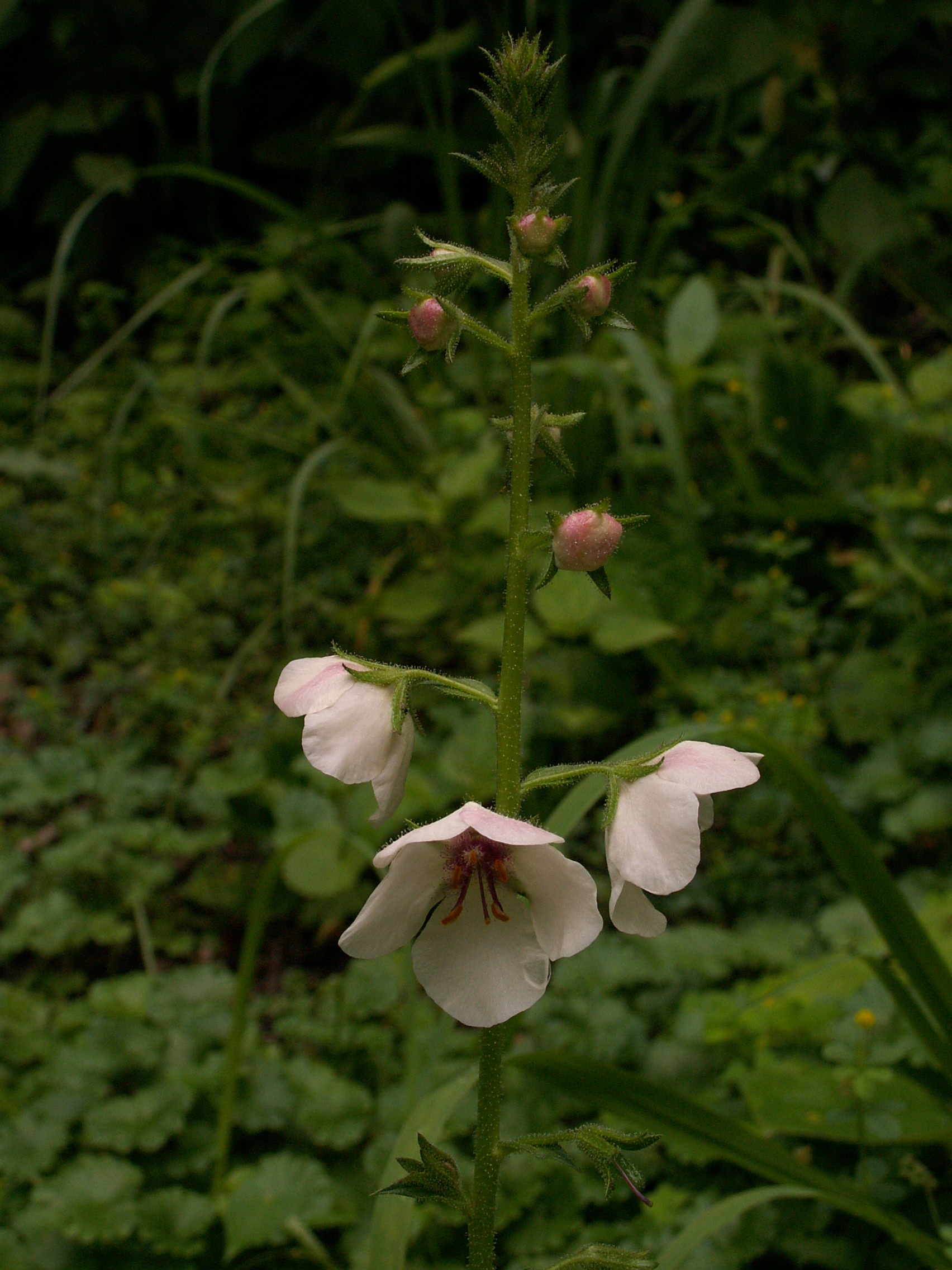 Photographed July 15.
Photographed July 15. Photographed July 15.
Photographed July 15.These stately, slender perennials have lately become favorites in the garden trade. In the wild, they grow white or yellow flowers. The yellow flowers seem to be more common in most places, but the white ones (var. albiflorum, according to Gray) are far more common in Pittsburgh. Gardeners have bred a number of attractive pastels. A close look (click to enlarge the picture above) reveals the “filaments all bearded with violet wool,” as Gray describes them.
The plants like to grow in a clear spot at the edge of the woods, but they are just as happy popping up in recently disturbed ground in full sun.
 Photographed June 10.
Photographed June 10.
Gray describes the genus and the species:
VERBASCUM [Tourn.] L. MULLEIN. Calyx 5-parted. Corolla 5-lobed, open or concave; the lobes broad and rounded, a little unequal. Style flattened at the apex. Capsule globular, many-seeded. Tall and usually woolly biennial herbs; the leaves of the stem sessile, often decurrent. Flowers in large terminal spikes or racemes, ephemeral, in summer. (The ancient Latin name, altered from Barbascum.)
V. blattaria L. (MOTH M.) Green and smoothish, or somewhat glandular-pubescent above, slender; lower leaves petioled, oblong, doubly serrate, sometimes lyre-shaped, the upper partly clasping; raceme loose, the pedicels longer than the fruit; filaments all bearded with violet wool. Roadsides and waste places, w. Me. to Ont., and southw., local. Corolla either yellow, or (in var. albiflorum Ktze.) white with a tinge of purple. (Nat. from Eu.)

In Wild Flowers Worth Knowing, the Moth Mullein is described thus:
Moth Mullein
Verbascum blattaria
Flowers—Yellow, or frequently white, 5-parted, about 1 in. broad, marked with brown; borne on spreading pedicles in a long, loose raceme; all the filaments with violet hairs; 1 protruding pistil. Stem: Erect, slender, simple, about 2 ft. high, sometimes less, or much taller. Leaves: Seldom present at flowering time; oblong to ovate, toothed, mostly sessile, smooth.
Preferred Habitat—Dry, open waste land; roadsides, fields.
Flowering Season—June-November.
Distribution—Naturalized from Europe and Asia, more or less common throughout the United States and Canada.“Of beautiful weeds quite a long list might be made without including any of the so-called wild flowers,” says John Burroughs. “A favorite of mine is the little Moth Mullein that blooms along the highway, and about the fields, and maybe upon the edge of the lawn.” Even in winter, when the slender stem, set with round brown seed-vessels, rises above the snow, the plant is pleasing to the human eye, as it is to that of hungry birds.
